Glossographia was Blount’s first lexicographical work, and the fourth monolingual English dictionary published. There were many new English words in the seventeenth century, but the last lexicographical compilation was Henry Cockeram’s dictionary in 1623, so Blount’s Glossographia was met with immediate success.
Glossographia was first published in 1656, containing over 11,000 words. There was debate among lexicographers whether or not so many foreign words should be taken up in the English language. Blount chose to define words derived from Hebrew, Greek, Latin, Italian, Spanish, French, Turkish, and Saxon. He also defined specialist words used in academic disciplines of mathematics, physics, humanities, sciences, and law. This is very fitting for the stated objective of the dictionary to be “very useful for all such as desire to understand what they read” printed on the cover page (see below).
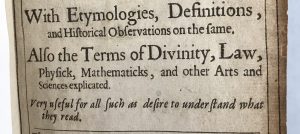
Cover page of Blount’s Glossographia, 1661 edition
Glossographia is known to be the first monolingual English dictionary to include the etymologies of words. This approach set a precedent for later dictionaries. Glossographia was also the first English dictionary to credit other sources, as Blount also extensively cited and referred to the work of his predecessors in his definitions.
Blount wrote a preface “To the reader” (see below) which opens Glossographia. Blount claims that his work took over twenty years to compile. Blount observed how many new words were spoken on the streets. Since Blount was chiefly concerned with communication, he wanted to explain specialist terms to be understood by the functionally literate. In “To the reader,” he relates to his audience, by claiming that he also was frustrated not being able to understand such words encountered in scholarly readings, thereby motivating his work. He includes jargon used by physicians and legal terminology, as well as slang. Therefore, he made the claim that Glossographia was much more comprehensive than any other previous dictionary, a selling point that probably contributed to Glossographia’s success. He most frequently cites legal statutes and the Bible, highlighting his passion for law and religion (see About Thomas Blount for more information).
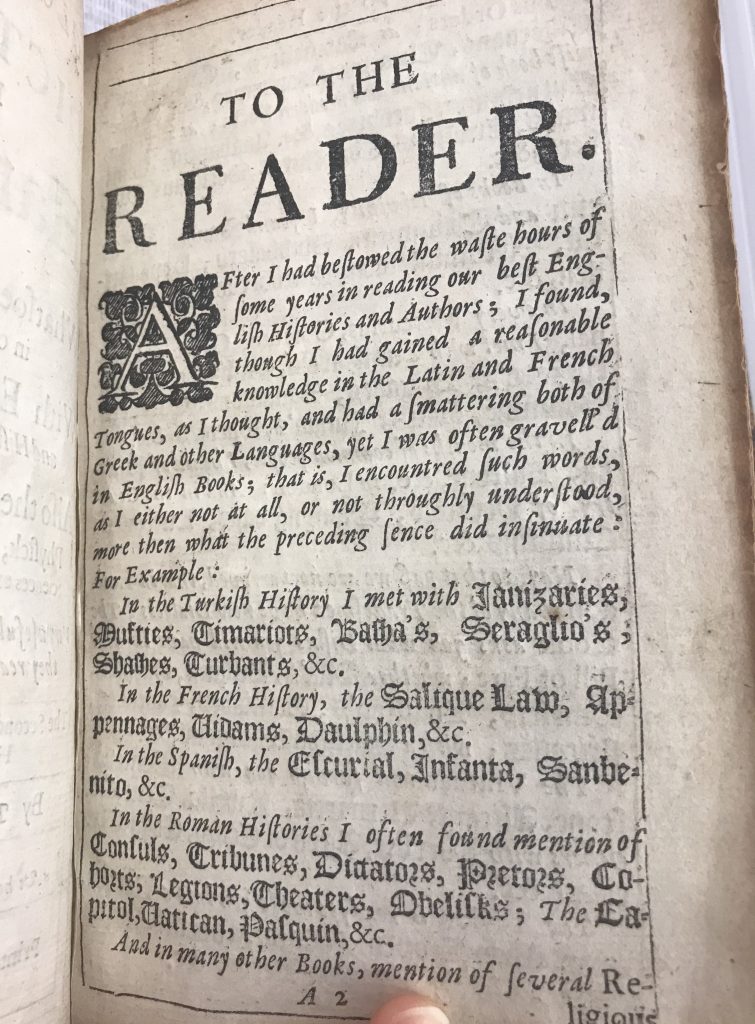
Blount’s preface “To the Reader” 1st page in Glossographia, 1661 edition
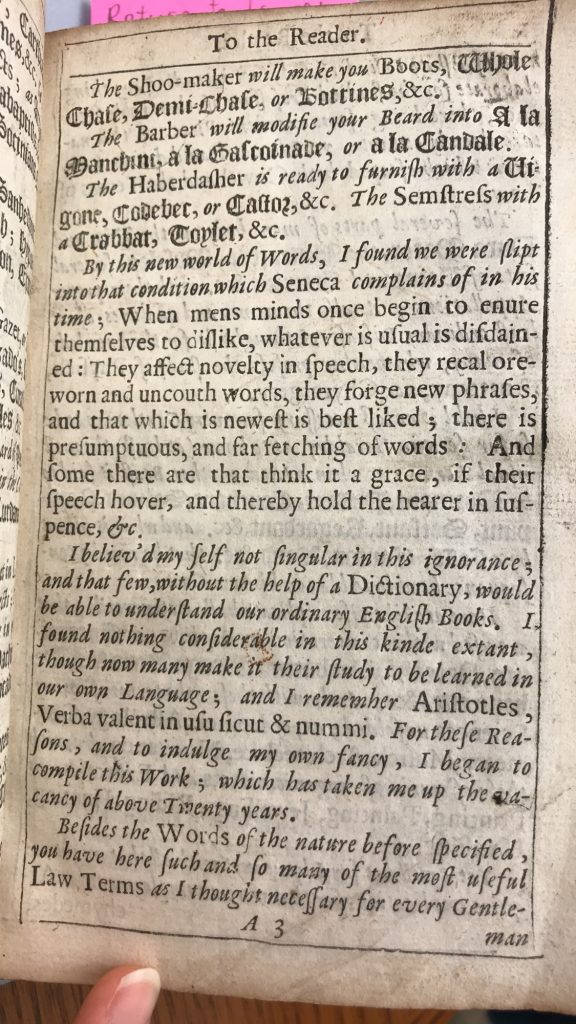
Blount’s preface “To the Reader” 3rd page in Glossographia, 1661 edition
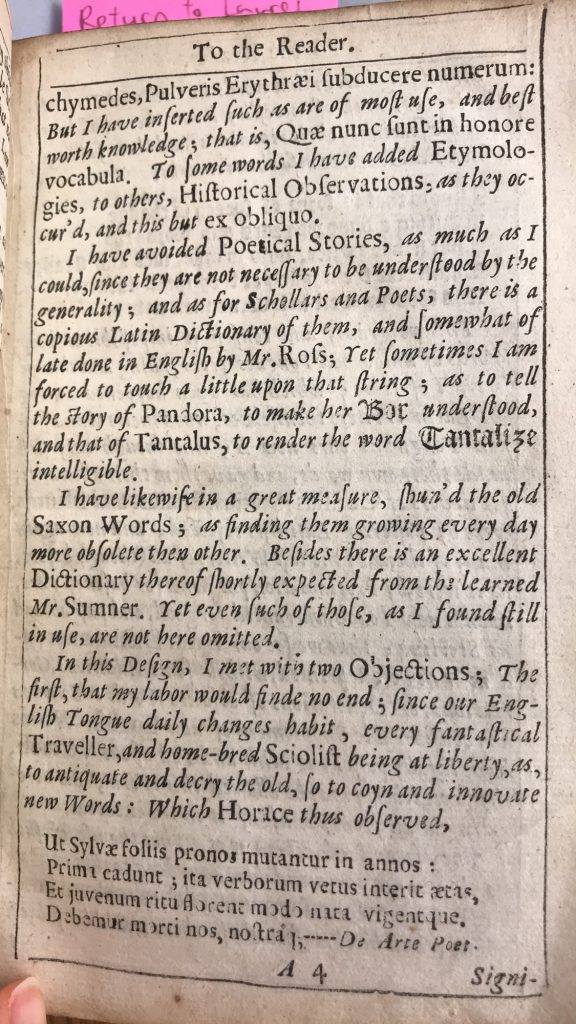
“To the Reader” in Glossographia, 1661 edition: “In this Design, I met with two Objections; The first, that my labor would finde no end; since our English Tongue daily changes habit, every fantastical Traveller, and home-bred Sciolest being at liberty, as to antiquate and decry the old, so to coyn and innovate new Words”
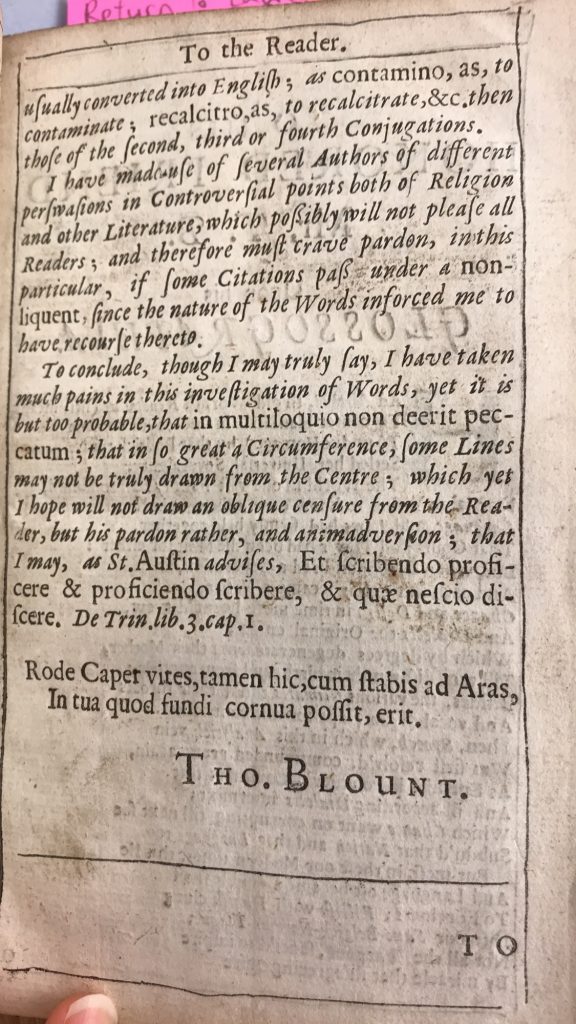
“To the Reader” in Glossographia, 1661 edition: “To conclude, though I may truly say, I have taken much pain in this investigation of Words”
Despite compiling a hard-word dictionary, Blount was adamant that dictionaries be authentic in compiling words that were actually used in literature and communication. His compilation methods were thus empirical and aimed to legitimize language used in different professional disciplines. For more information, see Blount’s Working Methods.
Glossographia was groundbreaking in that it can be said to resist social hierarchies in language. In “To the Reader,” Blount intended to provide a means to gain knowledge for a group of people that may not be exposed to scholarly works in different academic disciplines. He also addressed his readership as containing women and men.
